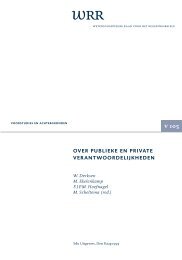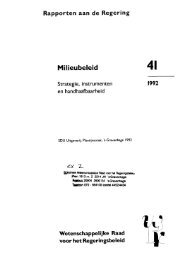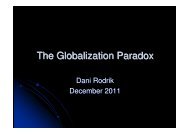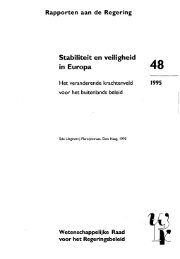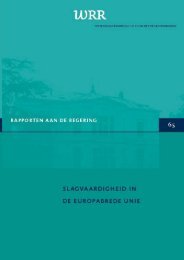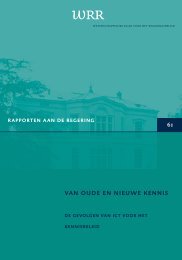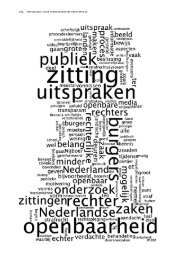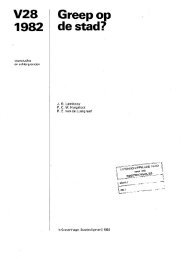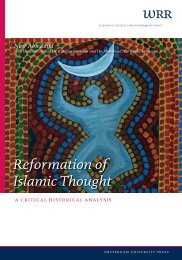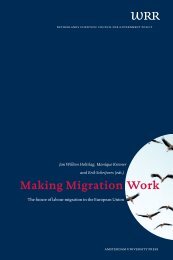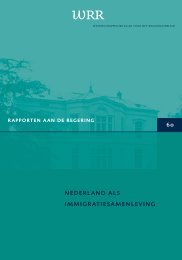w 109 long-run economic aspects of the european union's eastern ...
w 109 long-run economic aspects of the european union's eastern ...
w 109 long-run economic aspects of the european union's eastern ...
Create successful ePaper yourself
Turn your PDF publications into a flip-book with our unique Google optimized e-Paper software.
LONG-RUN ECONOMIC ASPECTS OF THE EUROPEAN UNION’S EASTERN ENLARGEMENT2.2 ASSESSING PRE-ACCESSIONIn tracing gaps in <strong>the</strong> current adoption <strong>of</strong> <strong>the</strong> IM acquis it is nei<strong>the</strong>r possible norfruitful for <strong>the</strong> purpose <strong>of</strong> this study to descend to <strong>the</strong> level <strong>of</strong> <strong>the</strong> greatest detail,even though such detail matters in market transactions. Very detailed assessmentsare suitable for a full understanding <strong>of</strong> <strong>the</strong> accession negotiations or for specialisedquestions in a given policy or business area. Our focus is on <strong>the</strong> <strong>long</strong>-<strong>run</strong> (prospect<strong>of</strong>) adoption, in <strong>the</strong> context <strong>of</strong> <strong>the</strong> entire set <strong>of</strong> <strong>the</strong> Copenhagen criteria, as well ason <strong>the</strong> interaction with <strong>the</strong> process <strong>of</strong> transition to a functioning market economy.Specific adoption gaps in <strong>the</strong> more difficult areas can subsequently be identifiedand discussed, since it will take time to overcome <strong>the</strong>m.Tables 2.2a and 2.2b provide a bird’s eye view <strong>of</strong> <strong>the</strong> most recent assessments <strong>of</strong>pre-accession. Table 2.2a evaluates <strong>the</strong> five first wave CEEC-accession countrieswhereas Table 2.2b evaluates <strong>the</strong> second wave plus Turkey. The inclusion <strong>of</strong>Turkey is explained below.28The overall picture is first <strong>of</strong> all determined by <strong>the</strong> accession criteria (o<strong>the</strong>r than<strong>the</strong> political ones). The realisation <strong>of</strong> a market economy is confirmed for <strong>the</strong> firstgroup, whilst <strong>the</strong> second ‘wave’ exhibits two confirmations, two countries whichare ‘close’ and two denials for Bulgaria and Romania. As Turkey never was aplanned economy, it has no transition legacy. The ‘ability to withstand competition’(in Copenhagen defined at <strong>the</strong> country, not <strong>the</strong> sectoral or firm level) is hardto interpret for economists; in a well-functioning market economy it is hard toenvisage <strong>the</strong> lack <strong>of</strong> such an ability. In all probability it refers to <strong>the</strong> adjustmentcosts <strong>of</strong> reallocating human, financial, physical, nature-based and knowledgeresources, which are a function <strong>of</strong> experience, sector specificity, ‘new’ skills, butalso habits, mindsets, general employability and social security systems, etc. TheEast German example has demonstrated ra<strong>the</strong>r dramatically that even <strong>the</strong> relianceon well-tested (namely, West German) market rules and institutions, a robustsocial security system and enormous investments – public and private – cannot‘magically’ solve this transformation problem without high adjustment costs,material as well as immaterial. In this light, <strong>the</strong> second criterion (‘competitiveness’for short, in table 2.2) being fulfilled only in <strong>the</strong> medium-term is nei<strong>the</strong>r surprisingnor alarming. The difference with Turkey is interesting because <strong>the</strong> customs unionwith <strong>the</strong> EU and a wave <strong>of</strong> privatisations have stripped away a good deal <strong>of</strong> <strong>the</strong>possible cushions against fully-fledged competitive exposure . 2 Of greater concernis <strong>the</strong> assessment for Romania. If Romania cannot face fully-fledged competitiveexposure before <strong>long</strong>, it is liable to get twisted into vicious circles <strong>of</strong> defensiveinterventions which will undermine <strong>the</strong> acquis adoption and discourage entrepreneurialresources as well as foreign investors. The roots <strong>of</strong> <strong>the</strong> disappointing performanceby this country lie in its fragile coalition; reformers do not have <strong>the</strong>upper hand and <strong>the</strong> full implications <strong>of</strong> <strong>the</strong> acquis are de facto not accepted 3 .O<strong>the</strong>r countries have had periods <strong>of</strong> hesitation (Slovakia, Bulgaria; in a weakersense, Lithuania) but Romania is now <strong>the</strong> only accession country in Central



